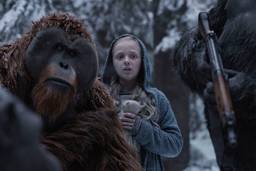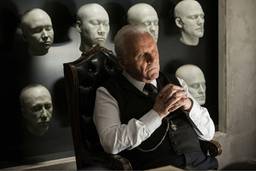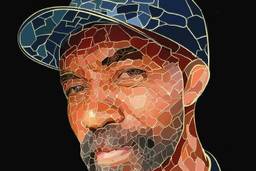Watching Quentin Tarantino’s ‘Hateful Eight’ Is Three Hours of Self-Punishment and I Loved It
Tarantino gives us a hangman-based civilization, with specious “law and order” talk doing nothing to obscure the essential cruelty of his characters’ actions.
Eileen Jones

The Hateful Eight is a gloriously grotesque oddity made by a talented freak conjuring up some obscure meaning that’s for him to know and us to find out. Only Quentin Tarantino’s immense popularity, based on his films’ cathartic gouts of blood and dialogue, could have allowed him to make such a crazy and compelling Grand Guignol Western.
The film takes Tarantino’s tendency toward outrageous genre film combos to an unprecedented point of strangeness. He plants a truth-seeking “whodunnit” structure straight out of an Agatha Christie mystery into his ultra-violent spaghetti Western, with Samuel L. Jackson taking on the behaviors of a badass frontier detective seeking an ultimate culprit, the guiltiest party or parties in a gang of equally ruthless liars, killers and godforsaken sumbitches.
Personally, I like it when a gifted director at a mid-to-late-career stage goes completely berserk and tries for something bizarre and impossible. What’s wealth and success for, if not to inspire the huge creative leaps that might mean failure, ignominy and fan meltdowns on social media?
The entire film is set up as a challenge. The punitive running time of 3 hours, 7 minutes, with intermission in some locales; the trek to the theater in your area, if there is one, that’s showing the film in 70 millimeter Panavision, a now-antiquated format that’s causing projection problems all over the country; the pain of paying almost double for your ticket; and then the raging bafflement of watching the film.
It’s easier for cinephiles like me to meet this challenge, of course. Give us a few sublime formal effects early on and we’ll sit there till doomsday in a state of Zen contemplation.
Terror and beauty in the Western
How well you weather the experience might come down to how thrilled you are about rare and awesome shots — like, for instance, the first one in the film. The camera cranes back slowly and incrementally, from a close-up of the carved wooden face of Christ nailed on the cross, wearing a burden of snow on his head, to an extreme wide shot of the big crucifix overlooking a vast, cruel snow-scape as our stagecoach full of bastards thunders by in the background. One nation under God!
If you can’t get all worked up about things like that, you might want to save yourself the trouble of seeing The Hateful Eight.
No one’s paying enough attention to the sheer splendor of the film’s first “chapter,” and the impact it has, or should have, on the rest of the film. There’s a stupid-critic tendency to dismiss the early outdoor scenes as negligible because the indoor scenes at a single location dominate the film to the point of perversity. But the exteriors are vital to the film.
All ambitious Westerns must establish the sublime quality of the territory, which is generally more terrifying than beautiful. It’s the necessary condition for contemplating America’s Founding, which American filmmakers a century ago located on the Western frontier rather than at Valley Forge or the Constitutional Convention in Philadelphia. (Think about it: How many Revolutionary War films have you ever seen?)
One of the most magnificent scenes in this film involves two men struggling to set up a rope-line from cabin to outhouse in a howling blizzard, with Ennio Morricone’s eerie, discordant music keening throughout. There’s no narrative purpose to justify the length or impressiveness of that scene. It’s there to insist on the raw power of the land and its climate, and the hopelessness of human endeavor within it.
Against that harsh backdrop that represents both utopian promise and perpetual struggle, characters in Westerns engage in confrontations that test whether or not a nation conceived in liberty and dedicated to the principle that all men are created equal can long endure — or, if it endures, can ever develop a worthy civilization based on such ideals. John Ford’s answer, expressed with considerable heartbreak in his classic film Stagecoach and several of his other great Westerns, is No.
Tarantino’s answer in The Hateful Eight, expressed with a kind of unholy glee, is “no fucking way.”
With liberty and justice for all
Yet we go on revering the ideals associated with American liberty and equality, even as we violate them with every action we take. You’ll see what I mean when Walton Goggins, a god among actors, reads “the Lincoln letter” as the end of The Hateful Eight. If that doesn’t get you like a garrote around your throat, you ain’t no proper American.
Like John Ford setting up his microcosm of the West in Stagecoach, by gathering a range of typical Western characters into one claustrophobic space within a desolate landscape of maximum danger, Tarantino takes his time setting the confining scene for confrontations. Of course, Tarantino makes some fundamental changes to Ford’s approach. His cruel Western landscape showcases mountains and blizzards, not desert scrubland between grand mesas. And Tarantino’s Western character types are almost all “bad men” (plus one bad woman) as the title suggests, instead of Ford’s clear hero with a tarnished past (John Wayne as the Ringo Kid) and myriad colorful figures such as a the drunken doctor, the Southern gentleman gambler and the prostitute with a heart of gold. Ford’s characters all have clear opportunities to present themselves as exemplary Americans by overcoming differences to work together, learning tolerance and respect for one another in a condition of perpetual crisis.
And for a very brief interlude, as a traveling unit, they conquer their limitations sufficiently to achieve something like a decent little civilization. (If you can ignore John Ford’s own diehard prejudice against Native Americans, that is, which ironically locates the narrative within a context of blind hatred.)
Tarantino forecloses any such starry-eyed possibilities. His “eight” are established as irredeemably hateful from the beginning, and the only alliances that are created are forged in duplicity, venality and abhorrence. Just figuring out amongst them how to keep the door shut against gale-force winds takes a laughable amount of stupidly repeated instructions, shouting, cursing and nonsensical hostility toward the door. (“That door’s a whore,” one says repeatedly.)
In the complex flashback structure, we eventually discover that any benevolent community has already been destroyed before we arrive at the isolated stagecoach stop called Minnie’s Haberdashery, with our first five characters on that fateful stagecoach.
There’s John “The Hangman” Ruth (Kurt Russell), a bounty hunter famous for his commitment to bringing in wanted criminals alive, which is much more trouble than dead, so he can see them hang; his feral prisoner Daisy Domergue (Jennifer Jason Leigh); a rival bounty hunter rescued from the oncoming blizzard, former Union officer Major Marquis Warren (Samuel L. Jackson), whose past includes a scandalous escape from a Southern prison that killed many white soldiers on both sides of the war; another blizzard rescue, Confederate loyalist Chris Mannix (Walton Goggins), claiming to be the new sheriff of the nearest town and also a former member of his father’s marauding “Mannix’s Marauders” which terrorized the black population of the border states; and O.B. Jackson (James Parks), the harassed stagecoach driver.
There they meet a rogues gallery of other outlandish figures that tend to populate the most interesting Westerns. (This film is an actors’ jamboree, with a fierce competition waged to determine who can give the most flamboyantly memorable performance. Honors go to Jackson, Goggins, and Leigh.)
There’s Oswaldo Mobray (Tim Roth), a tittering Brit who identifies himself as the territory’s real hangman; laconic cowboy Joe Gage (Michael Madsen); Bob (Demián Bichir), the mysterious, squinting Mexican claiming to be minding the store at Minnie’s Haberdashery; and testy old Confederate General Sandy Smithers (Bruce Dern), always prepared to refight the Civil War from his armchair.
The persistence of the Civil War as an organizing principle for The Hateful Eight, in the form of furiously flung insults and rhetorical revenge among Union and Confederate partisans, is typical of the Western genre, where Southern characters and values in particular relocated to make a last stand. Honor culture, vigilantism, and institutional race hatred, all social systems associated with the Confederacy, flourish in the Western.
One example of this cultural transference is legendary real-life Southerner Jesse James, an unregenerate Reb who made his name as a member of Quantrill’s Raiders before becoming a border state bank robber. Pop novelists and Hollywood filmmakers transferred him and his like to the far West, where they jostle against fictional Northern and Southern loyalists, along with a wild mixture of people from all points of the country and even the globe, in a no-man’s land of stark neutrality.
Here is a country so wide-open that, in early Westerns, it inspired hope and awe. Surely, looking at such a landscape, one could believe in “a new birth of freedom” that Lincoln resolved upon at Gettysburg, where “government of the people, by the people, for the people, shall not perish from the earth.”
But then you take a look at the people.
Even the sunniest classic Westerns are fundamentally concerned with “bad men” overrunning fragile settlements, infamous gunslingers, crooked gambling syndicates, feral clans like the Clanton family that run their territory like rural gangsters. In revisionist Westerns from the 1950s on, the landscape is increasingly populated by evil predatory bastards, underscoring how the bad are enabled by “liberty” and the openness of the land. Consider John Ford’s The Man Who Shot Liberty Valance, in which the psychotic killer rampaging around the West is named “Liberty.”
Tarantino pushes this association of freedom and rapacious villainy to a cartoonish level, making his main characters extreme variations of “Liberty,” including the bounty hunters who are as nasty as the criminals they catch or kill for profit. A large percentage of the characters have, or had, large bounties on their heads that serve as a constant temptation to mercenary yahoos all over the country.
When the dark side of liberty is under consideration, the law and systems of justice become the focus. In The Man Who Shot Liberty Valance, it’s Eastern lawyer Ranse Stoddard who tries to face down Liberty in a shootout, and notably fails to kill him, though he’s given the credit for it and builds a political career on it. In Hateful Eight, it’s Oswaldo Mobray, the territory’s hangman, who speaks for the law and justice. Civilization, he argues, rests on “dispassion” in legal punishment, which is represented by the hangman, a professional dealer in justice as opposed to a lynch mob.
A hangman-based civilization does seem to be what Tarantino’s showing us, with specious “law and order” talk doing nothing to obscure the essential cruelty of his characters’ actions.
The “hateful eight” are all charging each other with crimes, and advocating or dealing out ghastly punishments. The film opens with a shot of Christ hanging on his cross — the catalyst for the narrative is a bounty hunter called “The Hangman” transporting a murderer to town to be hanged — and the film ends with a brutally protracted hanging inside the cabin.
Though it should be factored in that Mobray, in claiming to be the real hangman, is lying about himself. Most of the characters are lying in Hateful Eight. Much of the “whodunit” process is about revealing true, or at least more plausible, backstories and circumstances behind the whopping lies they tell about themselves.
With its outsized characters and outrageous long yarns and its own wild narrative structure complete with chapters, the whole film engages in the American tradition of tall-tale telling, though villainous exploits are substituted for the entertainingly exaggerated stories once told of the heroics of Daniel Boone, Davy Crockett and Calamity Jane.
Tall-tale telling is woven into the meaning of the film as a fundamental part of the way Americans have defined ourselves. We run on myths and elaborate lies, a crippling reliance that John Ford excoriated in The Man Who Shot Liberty Valance, with its famously crushing dismissal of the truth by a newspaperman: “When the legend becomes fact, print the legend.”
Shitting on the Lincoln letter
The film’s most painful legend-in-the-making involves “the Lincoln letter,” a motif winding through the Hateful Eight narrative from beginning to end. It’s the most maddening aspect of Tarantino’s gory nightmare vision of the West, bringing together our Civil War obsession with our need for heroes, myths, and constant embiggening. There’s a lingering reverence attached to the letter throughout, even as it gets spat on, scorned, bloodied and crumpled. Northerners and Southerners alike want to see it, to hear it read, to bask in the homespun warmth of the martyred president’s words. Yet this sentimentality in no way interferes with the characters’ perpetual viciousness, or provides any hope of the nation’s redemption.
The man who carries the letter is the nearest to a “protagonist” the film gets, the truth-seeking ex-Union officer turned bounty hunter Major Marquis Warren, played by Tarantino’s longtime muse, Samuel L. Jackson. We are aligned forcefully with him when he enters the central location of the film, the cabin that will be awash ankle-deep in blood by the end. The letter has served as a kind of passport that has allowed the Major, a black man of considerable notoriety, some measure of safe travels through an infinitely hostile white world. “Got me on that stagecoach,” he says.
If we put that line back into John Ford’s terms again, getting on the stagecoach means getting to play a significant role in the culture’s popular representation of its founding. But Tarantino has now pushed the vision of that founding into a realm of ludicrous, surreal savagery. No one could want a seat in that coach.
The stagecoach in Ford’s vision travels to Lordsburg, an ironically named town of violent and exploitative frontier horrors, from which the protagonists — the prostitute and the outlaw — are rescued by a kindly marshal who was initially charged with bringing the Ringo Kid to “justice,” or at any rate to jail. Dr. Josiah Boone sends them over the border to Mexico where they might have a chance at happiness, saying, “Well, they’re saved from the blessings of civilization.”
In Tarantino’s vision, the stagecoach only goes as far as Minnie’s Haberdashery. And no one is saved.







